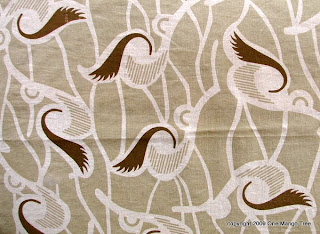 Do the crafts produced by artisans represent their cultural traditions and community values, or have the crafts changed to reflect those of the western market? Do western market demands influence the value system of the culture? Do these organizations build sustainable self sufficiency for artisans?
Do the crafts produced by artisans represent their cultural traditions and community values, or have the crafts changed to reflect those of the western market? Do western market demands influence the value system of the culture? Do these organizations build sustainable self sufficiency for artisans?During the summer of 2008, a George Washington University student named Shaina Shealy was in Gulu asking these questions. She spent time with the One Mango Tree tailors in Lucy's market stall and visited our training programs in the IDP camps, always questioning and gathering information to answer these questions. Check out the result of Shaina's work in this beautiful slideshow of her photography, which is being featured at GWU's Smith Hall of Art (exhibit pictured at left), and the YWCA in Birmingham, Alabama. One Mango Tree is featured at the two-minute mark on the video.
Here are some excerpts from Shaina's (below, right, with Lucy and trainees at Bobi IDP Camp) research:
"As I conceived of this project, I saw
 national identity and globalization as two separate and opposing themes. I saw the unique artistic qualities of Ugandan artists as targets threatened by globalization. Yet, I found that globalization had not weakened the cultural expression, but rather it redefined it. National identity as expressed through art is in constant re-formation. It is built through experiences, impressions and perceptions which are fluid. Each artist featured in this study had been exposed to globalization, yet each artist maintained a strong national identity in her work."
national identity and globalization as two separate and opposing themes. I saw the unique artistic qualities of Ugandan artists as targets threatened by globalization. Yet, I found that globalization had not weakened the cultural expression, but rather it redefined it. National identity as expressed through art is in constant re-formation. It is built through experiences, impressions and perceptions which are fluid. Each artist featured in this study had been exposed to globalization, yet each artist maintained a strong national identity in her work.""During this project I saw, first hand, the economic and psychological benefits the artists reaped as a consequence of the art they produced. They found their voices in their art. But the ultimate gift of self-sufficiency was obtained as a result of being a part of a supporting organization that offered life skills trainings, support groups, and/or basic security for its participants in addition to a forum for the produciton of art. Economic independence is crucial for women in developing countries."










































